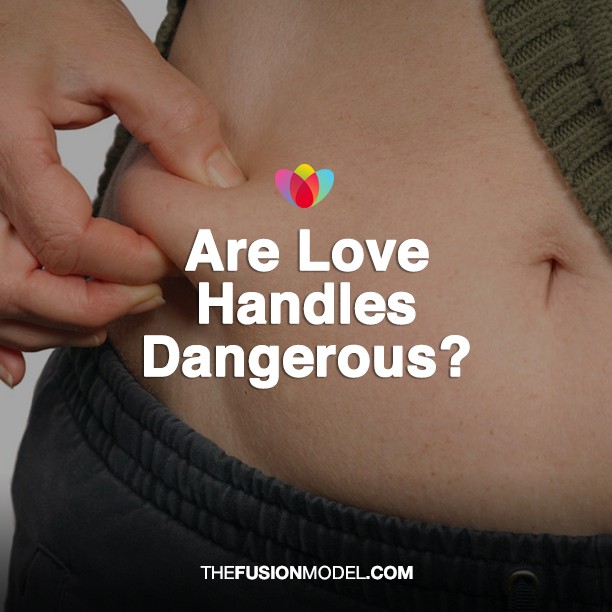The Rumor: Love handles are a cute and normal form of excess fat
The term “love handles” is often used to describe the endearing little rolls of excess fat that commonly appear on people’s midsections — as in, “Honey, I love your little love handles. They’re totes adorbs,” and so on. They’re so named because they provide a convenient place to grab on to during… well, you know. But while they might feel nice and soft and cuddly from the outside, could having love handles be a sign that something unhealthy is going on in your insides?
The Verdict: Having love handles increases your risk of developing heart disease
While the expression “love handles” sounds sweet and innocuous, the health risks love handles portend are anything but. According to cardiologist and upwave reviewer Rachel Harris, MD, an assistant professor at the Morehouse School of Medicine in Atlanta, having any kind of fat deposits (adiposity) increases your chance of developing coronary artery disease (CAD). Excess belly fat — both the jiggly kind just below the skin (subcutaneous) and the deeper kind that surrounds the organs (visceral) — increases the risk of cardiovascular disease, Harris says. “Men with a waist circumference greater than 40 inches and women with a waist circumference in excess of 35 inches are especially high-risk.”
Even more alarming? A normal-weight person can still be at high risk for heart disease if he or she has excess belly fat. A 14-year study that followed 12,785 American CAD patients found that normal-weight subjects with concentrated central obesity had a 50 percent higher risk of dying during the study than those who were flat-out obese. (An even larger study published in 2013 came to the same conclusions.)
The good news, says Harris, is that you can take action to reduce these risks. The first thing she recommends? Measuring your “true” waist to see if it falls into that dangerous 40- (or 35-) inch range. To get this measurement, find your hipbones and go slightly above them to the narrowest part of the waist. Then bring the tape measure around without cinching it. If you fall into the love-handle danger zone, Harris strongly urges you to seek out the help of your primary-care physician and start making positive lifestyle changes. To shed some of that excess belly fat, she recommends adding 30 minutes of moderate-intensity exercise each day, quitting smoking if you’re a smoker, and eating a balanced diet.
Making these changes is especially important if you have additional risk factors. “If you have a first-degree relative who has had premature coronary artery disease, that confers a higher risk,” Harris warns. “Conditions like hypertension [high blood pressure], diabetes, rheumatoid arthritis and lupus also put people at higher risk, as does smoking or high cholesterol.”
On the diet front, Harris suggests that you check out MyPlate.gov and recommends following DASH (Dietary Approaches to Stop Hypertension), which emphasizes portion size and eating all-natural foods. “I’m also a big proponent of the Mediterranean diet, which is rich in nuts, garlic, legumes, fish and white lean meats,” she says. “It’s an effective weight-loss tool, as well as very useful for anyone who’s at risk for coronary artery disease.”




